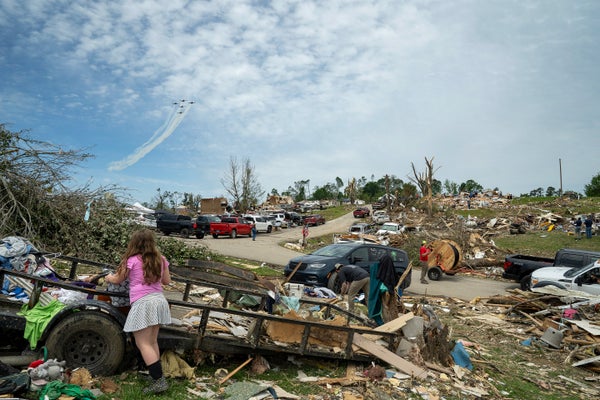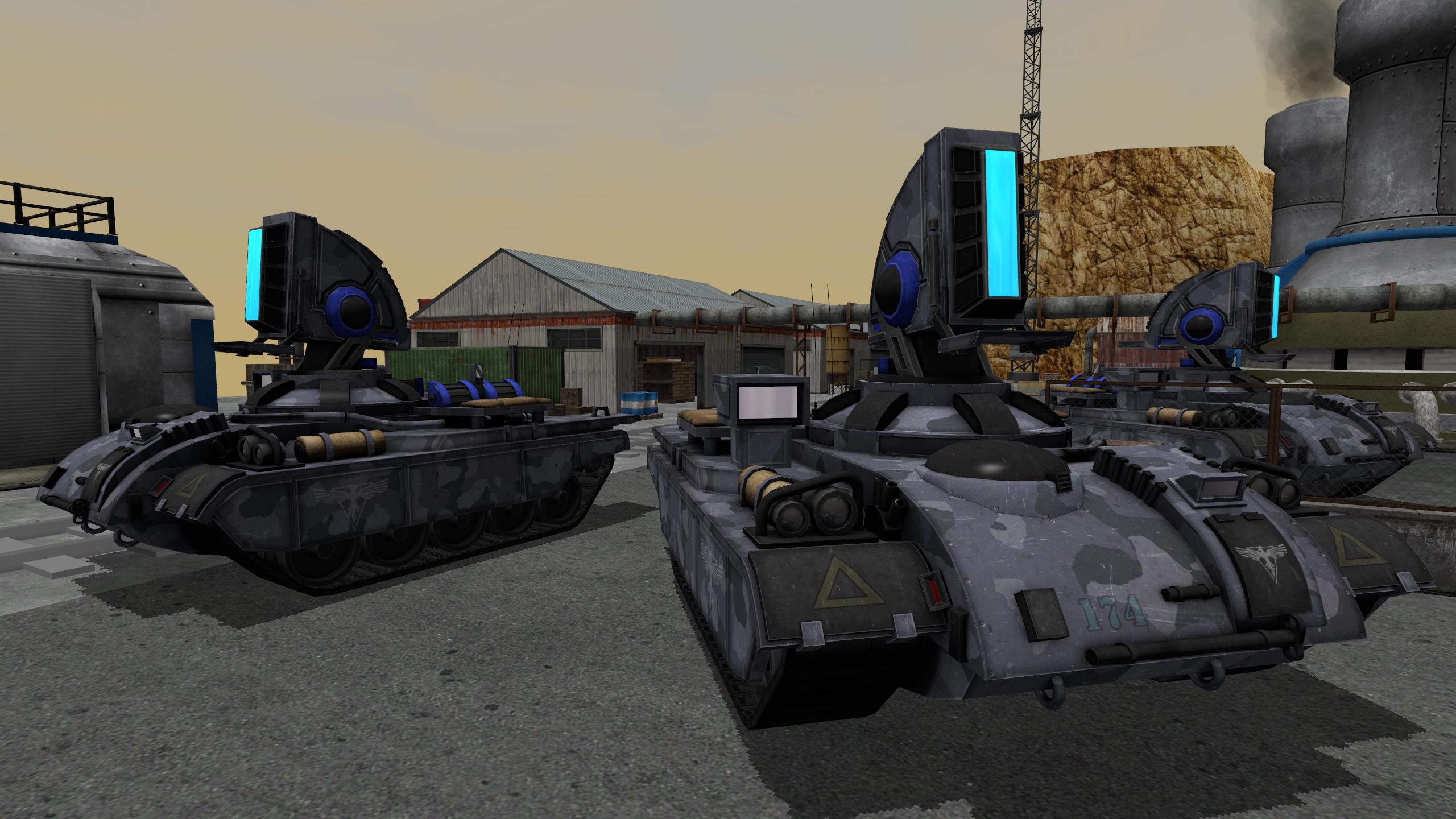Why the 2025 Tornado Season Has Been So Destructive
May 20, 20253 min readWhy Tornado Season Has Been So DestructiveSeveral devastating tornado outbreaks have cut swaths of destruction across the U.S. What’s driving these damaging storms?By Andrea Thompson edited by Dean VisserA U.S. Air Force aerobatic team flies in formation over community members and crews cleaning up debris on May 18, 2025, in the community of Sunshine Hills outside of London, Ky. A tornado struck the neighborhood just after midnight on May 17, 2025. Michael Swensen/Stringer/Getty ImagesNearly 900 tornadoes have torn through more than 30 states so far this year, killing dozens of people, shredding buildings and landscapes across big chunks of the Eastern U.S., and costing billions. The oddly fickle and precise mix of atmospheric ingredients needed to generate tornadoes just happens to have occurred over and over again since mid-March—and the season isn’t over yet.How do tornadoes form?“In order to get a tornado, you need to have a thunderstorm that’s capable of producing a tornado,” says Jana Houser, a tornado researcher at the Ohio State University. Most often, these are what meteorologists call “supercell” thunderstorms, which feature a circulation pattern called a mesocyclone.On supporting science journalismIf you're enjoying this article, consider supporting our award-winning journalism by subscribing. By purchasing a subscription you are helping to ensure the future of impactful stories about the discoveries and ideas shaping our world today.Supercell formation requires a set of conditions that make the atmosphere unstable, and these start with warm, moist air at the surface and cold, dry air above. The instability comes from warmer air’s greater buoyancy, which makes it rise upward. And this mix needs yet another specific ingredient, wind shear, “where winds change speed and direction as you go up with height” in the atmosphere, Houser says. This can create sort of a “tube” of horizontally rotating air. Next, the nascent twister needs an updraft, or upward-moving air, which tightens and speeds up the rotating air, taking it “from spinning like a bike tire” to “spinning like a top.”All of these conditions are necessary—but they’re still not always enough. “Most supercells don’t even actually produce tornadoes in their lifetime,” Houser says.The exact mechanics of tornado formation aren’t yet fully understood, but essentially, air rotation at the ground needs to meet a strong updraft aloft; this pulls the rotation in like a figure skater pulling in their arms, as Houser puts it.Where do tornadoes form?Tornadoes can—and do—happen wherever the right conditions are present, from Argentina to Italy to Bangladesh. But the U.S. is by far the leader in the average annual number of these storms. North America’s geography naturally promotes a crucial collision of air masses: juicy air streams northward from the bathtub warmth of the Gulf of Mexico, while cool, dry winds rush eastward over the Rockies. The air masses meet over the center of the country, which is how the region centered around northeastern Texas and Oklahoma came to be called Tornado Alley. “If you were to design a place that would get repeated severe storms, you would build something like the central U.S.,” says Rich Thompson, chief of forecast operations for the National Weather Service’s Storm Prediction Center.But over the past decade or so, that tornado bull’s-eye has changed a bit. A “new Tornado Alley” has emerged about 400 or 500 miles to the east, in part because moist Gulf air is reaching farther east than in the past.Why do tornadoes mainly form in spring?“Spring tends to be the peak because it’s a transitional season,” Houser says. Coming out of winter, there is still abundant cold air at northern latitudes and aloft, and at the same time, the sun is shining much more, heating up the surface air to promote instability.Fall is also a transitional season, but the air aloft remains generally warmer for some time after summer. Tornado activity doesn’t tend to pick up again until later in the fall, when the atmosphere has cooled down again.The local peaks in tornado occurrence tend to move northward as spring rolls into the summer: the Gulf Coast peaks earlier in the spring, the Southern Plains in May and June, and the Northern Plains and upper Midwest in June and July.The Clear Creek post office lays in rubble after a tornado destroyed it. Several tornadoes hit Greene and Monroe counties in south-central Indiana, leaving a path of destruction.Jeremy Hogan/SOPA Images via ZUMA Press Wire/Alamy Stock PhotoWhy has the current tornado season been so active?By mid-May the U.S. has had an estimated 886 tornadoes. “We’re on the upper end of what is typical” at this point, Thompson says. Until this month, the most active periods this year were in mid-March and early April. “Those were the two that really pushed us above what is typical,” he adds.The meanderings of the jet stream—a narrow band of strong winds high in the atmosphere—are part of what determines how active a season becomes. The jet stream “really dictates what kinds of weather we end up getting at the surface,” Houser says. It influences the paths storms take, and it forms the boundaries between warmer and cooler air masses.In the case of this spring, “we just have periodic high-energy systems that are moving through,” Houser says, and they have been very effective at producing severe weather when they occur. “It’s just a matter of getting the ingredients to show up and getting the storms to take advantage of them,” Thompson says.
#why #tornado #season #has #been
Why the 2025 Tornado Season Has Been So Destructive
May 20, 20253 min readWhy Tornado Season Has Been So DestructiveSeveral devastating tornado outbreaks have cut swaths of destruction across the U.S. What’s driving these damaging storms?By Andrea Thompson edited by Dean VisserA U.S. Air Force aerobatic team flies in formation over community members and crews cleaning up debris on May 18, 2025, in the community of Sunshine Hills outside of London, Ky. A tornado struck the neighborhood just after midnight on May 17, 2025. Michael Swensen/Stringer/Getty ImagesNearly 900 tornadoes have torn through more than 30 states so far this year, killing dozens of people, shredding buildings and landscapes across big chunks of the Eastern U.S., and costing billions. The oddly fickle and precise mix of atmospheric ingredients needed to generate tornadoes just happens to have occurred over and over again since mid-March—and the season isn’t over yet.How do tornadoes form?“In order to get a tornado, you need to have a thunderstorm that’s capable of producing a tornado,” says Jana Houser, a tornado researcher at the Ohio State University. Most often, these are what meteorologists call “supercell” thunderstorms, which feature a circulation pattern called a mesocyclone.On supporting science journalismIf you're enjoying this article, consider supporting our award-winning journalism by subscribing. By purchasing a subscription you are helping to ensure the future of impactful stories about the discoveries and ideas shaping our world today.Supercell formation requires a set of conditions that make the atmosphere unstable, and these start with warm, moist air at the surface and cold, dry air above. The instability comes from warmer air’s greater buoyancy, which makes it rise upward. And this mix needs yet another specific ingredient, wind shear, “where winds change speed and direction as you go up with height” in the atmosphere, Houser says. This can create sort of a “tube” of horizontally rotating air. Next, the nascent twister needs an updraft, or upward-moving air, which tightens and speeds up the rotating air, taking it “from spinning like a bike tire” to “spinning like a top.”All of these conditions are necessary—but they’re still not always enough. “Most supercells don’t even actually produce tornadoes in their lifetime,” Houser says.The exact mechanics of tornado formation aren’t yet fully understood, but essentially, air rotation at the ground needs to meet a strong updraft aloft; this pulls the rotation in like a figure skater pulling in their arms, as Houser puts it.Where do tornadoes form?Tornadoes can—and do—happen wherever the right conditions are present, from Argentina to Italy to Bangladesh. But the U.S. is by far the leader in the average annual number of these storms. North America’s geography naturally promotes a crucial collision of air masses: juicy air streams northward from the bathtub warmth of the Gulf of Mexico, while cool, dry winds rush eastward over the Rockies. The air masses meet over the center of the country, which is how the region centered around northeastern Texas and Oklahoma came to be called Tornado Alley. “If you were to design a place that would get repeated severe storms, you would build something like the central U.S.,” says Rich Thompson, chief of forecast operations for the National Weather Service’s Storm Prediction Center.But over the past decade or so, that tornado bull’s-eye has changed a bit. A “new Tornado Alley” has emerged about 400 or 500 miles to the east, in part because moist Gulf air is reaching farther east than in the past.Why do tornadoes mainly form in spring?“Spring tends to be the peak because it’s a transitional season,” Houser says. Coming out of winter, there is still abundant cold air at northern latitudes and aloft, and at the same time, the sun is shining much more, heating up the surface air to promote instability.Fall is also a transitional season, but the air aloft remains generally warmer for some time after summer. Tornado activity doesn’t tend to pick up again until later in the fall, when the atmosphere has cooled down again.The local peaks in tornado occurrence tend to move northward as spring rolls into the summer: the Gulf Coast peaks earlier in the spring, the Southern Plains in May and June, and the Northern Plains and upper Midwest in June and July.The Clear Creek post office lays in rubble after a tornado destroyed it. Several tornadoes hit Greene and Monroe counties in south-central Indiana, leaving a path of destruction.Jeremy Hogan/SOPA Images via ZUMA Press Wire/Alamy Stock PhotoWhy has the current tornado season been so active?By mid-May the U.S. has had an estimated 886 tornadoes. “We’re on the upper end of what is typical” at this point, Thompson says. Until this month, the most active periods this year were in mid-March and early April. “Those were the two that really pushed us above what is typical,” he adds.The meanderings of the jet stream—a narrow band of strong winds high in the atmosphere—are part of what determines how active a season becomes. The jet stream “really dictates what kinds of weather we end up getting at the surface,” Houser says. It influences the paths storms take, and it forms the boundaries between warmer and cooler air masses.In the case of this spring, “we just have periodic high-energy systems that are moving through,” Houser says, and they have been very effective at producing severe weather when they occur. “It’s just a matter of getting the ingredients to show up and getting the storms to take advantage of them,” Thompson says.
#why #tornado #season #has #been
·82 مشاهدة






